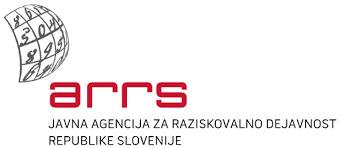
The overall aim of this post-doctoral project is to gain knowledge on the immobilization and leaching of various toxic microelements and trace elements (TEs) from alkali-activated materials (AAMs) prepared using locally available construction&demolition and industrial waste (or byproduct) (mineral wool waste, coal-burned fly ash and steel slag). Many parameters such as the particle size of the precursors, the initial preparation of the paste, the curing regime and the sample ageing under different conditions can significantly affect the final properties of the material. In the present work, these parameters will be systematically evaluated with respect to increasing/decreasing the leaching of TEs from AAMs. Since the long-term stability of the material is important, durability tests will be included (e.g. freeze-thaw resistance) and samples of AAMs will also be subjected to the leaching tests. Depending on the sample (granular or monolithic), different leaching tests will be performed and the results will be compared with each other and with the Slovenian legislation, where the maximum allowable concentration for toxic elements are available (values for inert, non-hazardous or hazardous waste; values for recycled materials). Toxic elements studied in this work include elements such as As, Ba Cd, Cr, Cu, Hg, Mo, Ni, Pb, Sb, Se in Zn.
The leaching of toxic elements from AAMs is an indicator of the sustainability of materials and an important and necessary tool for proper environmental risk assessment. Accumulation of contaminants can threaten ecosystems and human health by leaching elements from AAMs (and other construction materials) into aquatic and terrestrial environments. Many studies have demonstrated the suitability of AAMs in terms of mechanical properties and durability, but to successfully bring them to the market they need to be thoroughly evaluated from an environmental perspective. Comprehensive studies with different mix designs, constituents, and influencing parameters affecting the leaching of toxic elements from AAMs are necessary to identify different options (solutions) to minimise the potential toxicity of this construction material and achieve effective waste management strategies. Since alkali activation can reduce/increase toxic elements in eluates, initial preparation and curing conditions are critical in obtaining a long-term stable final product that ensures efficient immobilisation. This should be considered when conducting research. However, the selection of the appropriate leaching method is critical to evaluate the degree of leaching for the material under study. Testing and comparing different leaching methods for AAMs will also be part of the proposed work. In an interdisciplinary manner, in this study technical knowledge (preparation and characterization of AAMs) with environmental aspects (assessment of environmental risks by performing different leaching tests) and knowledge of analytical chemistry (determination of TEs in leachates obtained by leaching AAMs). This approach is important and necessary to follow the circular economy strategy by reducing mineral waste and increasing its recyclability and reuse.

